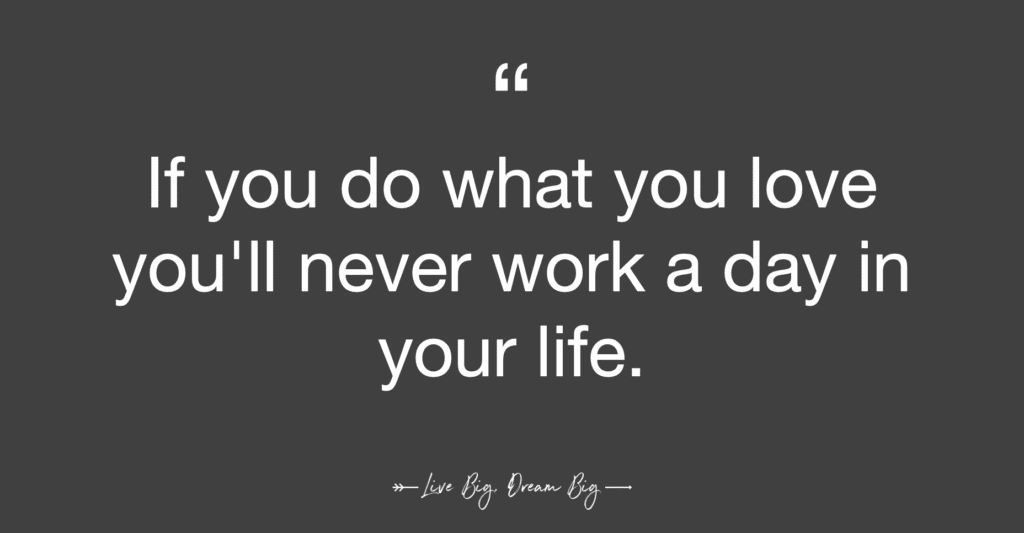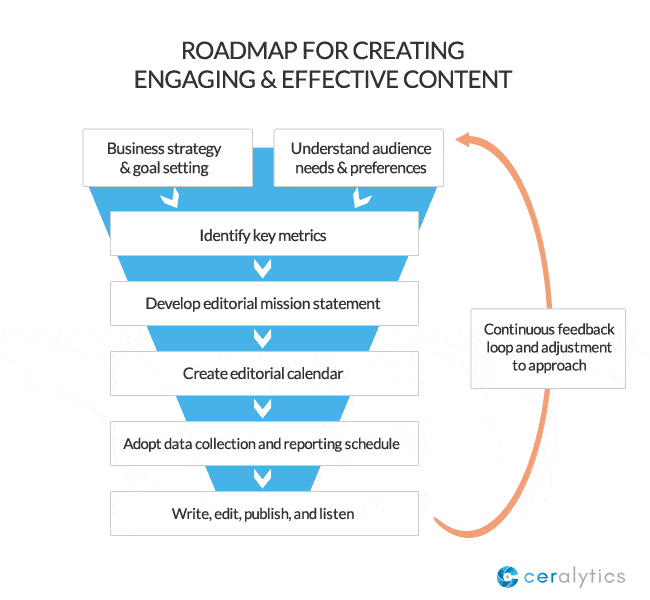Creating a life where you’re excited about doing what you love has to be the ultimate dream, right? Yet, so many people choose careers that provide financial stability over their own happiness. And some offer an endless amount of excuses as to why they can’t do what they really love for a living.
I get it — that all sounds really negative, but you have to also admit there is truth behind it. But what if I was to tell you that you could do both? You can continue working the crappy 9 – 5 that pays the bills, and then after that, you can spend time building up a side hustle doing what you really love.
It’s 100% possible — and the secret to doing that? You. Your actions, discipline, focus, and accountability for your own life.
In today’s blog post, I’ll walk through specifics on what you can start doing right now to live a life doing work you love.

What is a lifestyle entrepreneur?
If you have followed along with my story, you already know that I started my company as a side hustle while working a full-time job for several years. At the time, my goal was to have the freedom to do what I love while also making money.
Sounds easy enough, right? Absolutely, but the hard part is the actual hustle — the hard work you have to put in takes a ton of time, effort, and patience. As such, I was relentless in making this dream a reality. As soon as I was done with my 9-5, I worked from 6 pm to 2 am.
What exactly is a lifestyle entrepreneur? A lifestyle entrepreneur decides on the kind of lifestyle they want to enjoy and then builds their business in a way that supports it. It’s different from how other entrepreneurs operate: to put the company first and then design their lifestyle to accommodate it.
Lifestyle entrepreneurs put great emphasis on freedom, as well as passion. They may want to work only enough to earn a certain income, which in turn supports their lifestyle of choice. Therefore, they may be less focused on growth than other entrepreneurs.
Get clear on what you have to offer
Self-awareness is essential here. Knowing your strengths and weaknesses is going to be a huge win for you. In other words, take what you’re good at, then couple it with what you actually want to do. From there, figure out what it is you’re going to sell and how you’re going to sell it.
I’m a big fan of playing off of your strengths because you have a higher trajectory for success than dwelling on the shit that you’re not good at and trying to make any sort of living off of that. This is about setting yourself up for success.
Here are some key benefits of getting clear on what you have to offer:
- Building a community of like-minded individuals
- Knowing how to position yourself properly
- Determining the type of content you should be pushing out
- Gaining a better understanding of ‘who’ you’re going after and ‘why’
- Figuring out how to scale your efforts
- Focusing on how you can maximize profit margins
Develop valuable and engaging content
There’s a multitude of ways that you can go about creating content — from video, text-based blog posts, webinars, etc. What’s most important is that you narrow in on where you’re most comfortable. I say this because there are people who love to write, and they prefer to develop evergreen content published on their site weekly, whereas others might be all about video and speaking in front of a camera.
You don’t need to do it all. Just simply do what you know will bring the greatest amount of value and engaging content to your target audience while also keeping you in a place where you aren’t dreading the process of it.
For starters, consider the following steps:
- Have a goal in mind. Know why you’re pushing out the content and what action you want your audience to take (e.g., subscribe, become a lead, etc.).
- Look at creating a content calendar that will highlight what topics you will cover.
- Make sure this content calendar also includes your publishing cadence. The more consistent you are, the better.
- Track and measure your content’s performance to know which ones drive the most engagement, leading to some sort of action that directly impacts your business.

If you are having a hard time keeping up with your publishing cadence, you should hire freelancers to help. Fiverr has a lot of great freelancers available to help with everything from video development to copywriting. Check out their options here.
The importance of developing content is really about primarily adding value to your target audience. This is what is going to build trust and credibility to turn subscribers into customers. If you go in with the mindset of selling right off the bat, that becomes really inauthentic and can deter people.
If you want some help developing your content strategy, SEMRush has a great content marketing toolkit that can help you with everything from researching keywords to scheduling out the content to analyzing its effectiveness once it has been posted. Sign up to test out the tool today.
Balance being value-driven and making money
Here’s what I mean by finding a balance between the value you give out and making money — it doesn’t have to be 50/50. In fact, it could be 80/20 or any other breakdown that you feel is going to be best for you. That’s the beauty of it all. You can test this and figure out which ones you see your target audience gravitate towards the most.
There are entrepreneurs who give away everything for free, then every once in a while they’ll push their community to actually ‘buy’ from them. Then there are others who push for both simultaneously. The point here is that you won’t know exactly what is going to work best until you actually try it.
Quite honestly, if you aren’t comfortable with the ‘selling’ part at the beginning, then focus on being more value-driven, which will build in more brand equity for yourself. Then later down the line, you can figure out the monetization aspect.
The obvious path to getting started is to ensure that you have a website or targeted landing page set up that is contextually relevant to your subject matter expertise and will also easily segue into either a product or service you want to sell. If you don’t have a website yet, you can use Bluehost to register your domain and get something simple up and running on WordPress. Their plans are crazy cheap starting at $3.95/mo. You can sign up and create your account here. Another option would be Unbounce, which is a simple drag and drop tool to help you get a landing page up ASAP. Sign up for your Unbounce account here.
Personally, when it comes to my content, I’ve been in the mindset of value first. I spent two years blogging before even getting one sale. When I revamped my blogging strategy last year, it took me six months before getting a sale, but that one sale yielded a 603% ROI for my business.
Wrapping it up
I say this a lot because I truly believe that mindset is everything — you don’t have to have everything figured out before you get started. You simply have to get started. You’ll learn so much along the way that you can easily tweak and make the necessary changes to grow.
Making any sort of progress will take sacrifice and discipline on your part to ensure that you are putting in the time and effort to eventually do what you love full-time. It won’t come easy and might feel slow at first, but the rewards are enormous, and you’ll be glad you did it.
Disclosure: Please note that some of the links above are affiliate links. I only recommend products and services that I use and stand behind, and if you decide to try them, I will earn a commission at no cost to you. Doing so helps me run this blog and provide free content for you, my readers.





